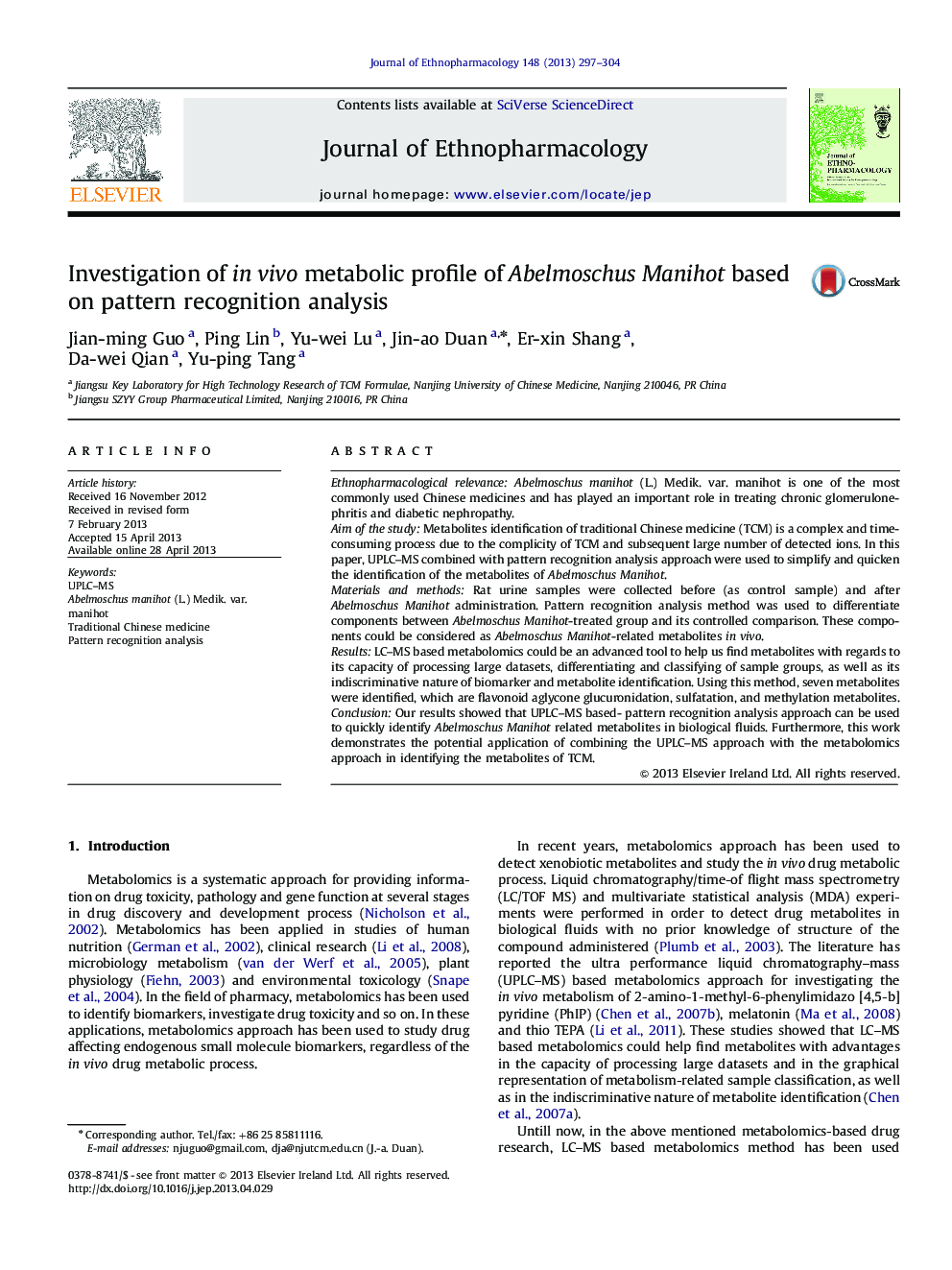| Article ID | Journal | Published Year | Pages | File Type |
|---|---|---|---|---|
| 5837627 | Journal of Ethnopharmacology | 2013 | 8 Pages |
Ethnopharmacological relevance:Abelmoschus manihot (L.) Medik. var. manihot is one of the most commonly used Chinese medicines and has played an important role in treating chronic glomerulonephritis and diabetic nephropathy.Aim of the study:Metabolites identification of traditional Chinese medicine (TCM) is a complex and time-consuming process due to the complicity of TCM and subsequent large number of detected ions. In this paper, UPLC-MS combined with pattern recognition analysis approach were used to simplify and quicken the identification of the metabolites of Abelmoschus Manihot.Materials and methods:Rat urine samples were collected before (as control sample) and after Abelmoschus Manihot administration. Pattern recognition analysis method was used to differentiate components between Abelmoschus Manihot-treated group and its controlled comparison. These components could be considered as Abelmoschus Manihot-related metabolites in vivo.Results:LC-MS based metabolomics could be an advanced tool to help us find metabolites with regards to its capacity of processing large datasets, differentiating and classifying of sample groups, as well as its indiscriminative nature of biomarker and metabolite identification. Using this method, seven metabolites were identified, which are flavonoid aglycone glucuronidation, sulfatation, and methylation metabolites.Conclusion:Our results showed that UPLC-MS based- pattern recognition analysis approach can be used to quickly identify Abelmoschus Manihot related metabolites in biological fluids. Furthermore, this work demonstrates the potential application of combining the UPLC-MS approach with the metabolomics approach in identifying the metabolites of TCM.
Graphical abstractDownload high-res image (131KB)Download full-size image
